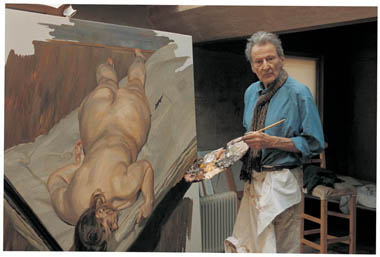Amazon says it won't be out until mid-August, but my copy arrived a few days ago. That's Fred Taraba's book "Masters of American Illustration: 41 Illustrators & How They Worked" from the publisher of Illustration Magazine (link
here).
I'm pretty cheap, but bought the book directly from the publisher instead of Amazon because I want them to stay in the business of providing junkies such as me biographies of illustrators and examples of their work; direct orders provide a better profit cut.
In his introduction Taraba tells us that the book originated as 41 articles in a magazine called "Step-by-Step-Graphics" in the 1990s. At the time he was working at the Society of Illustrators, so had access to both written material and people who could supply information and insights regarding the artists, all of whom were dead by 1989 when the project started.
The book contains the text of those articles with the minor changes that 20 years of new information and author insights inevitably bring. Also new were "more than 50" images.
Taraba's magazine articles did not cover Norman Rockwell, Howard Pyle, N.C. Wyeth and a few other titans of the field because accounts of their lives and work had been the subject articles and books and therefore not worth repeating.
I'm pleased that Taraba did include some of my favorites such as Mead Schaeffer, Saul Tepper and John LaGatta. Also in the book are some illustrators I'm not familiar with such as F.O.C. Darley. Then there a few whose inclusion I question such as Margaret Brundage whose ability to depict human anatomy was well under par for a professional illustrator of her era. But she did sci-fi/horror magazine covers, and the quality her work met the lower expectations for that genre in those days.
The illustrations in the book are nicely reproduced. Each artist's section begins with a two-page spread where one page is devoted to a single illustration, and there are other large illustrations that help the reader get a feeling for the artist's technique.
Speaking of technique (a factor of the book's "How They Worked" subtitle), depth of information varies from artist to artist. No doubt this was largely driven by material available to Taraba, so I can't fault him. Still, there were cases when the topic was barely touched on. Others such as Harry Beckhoff's writeup had significant detail.
There were informational gems including the fact that several illustrators made frequent use of mixed media. Given my woeful art training in college, I had blithely assumed that oil was oil, watercolor was watercolor, casein was casein, gouache was gouache and so on. It is only recently that I've been discovering (poor, ignorant me!) that illustrators would use whatever tool it took to get the job done, be it a touch of pastel in a highlight or some pencil on bits requiring detailed work. After all, their work was reproduced, so discrepancy between original art and what magazine readers saw was both expected and exploited by a canny illustrator.
Biographical information is also patchy depending on the subject, so there were cases where I wished there was a little more detail regarding an artist's training and personal life. But detailed information is where Illustration magazine steps in; much or all of an issue can be devoted a single illustrator.
Despite the small criticisms presented above, my reaction to the book is very favorable. It's far better than the generally shallow, chatty (but by no means useless) 1951 "Illustrating for the Saturday Evening Post" by Ashley Halsey, Jr. which covers 62 artists who contributed to the magazine during the late 1940s. Taraba's text is indeed informative as are the illustrations. The book takes a proud place on the shelf I reserve for illustration.

















































